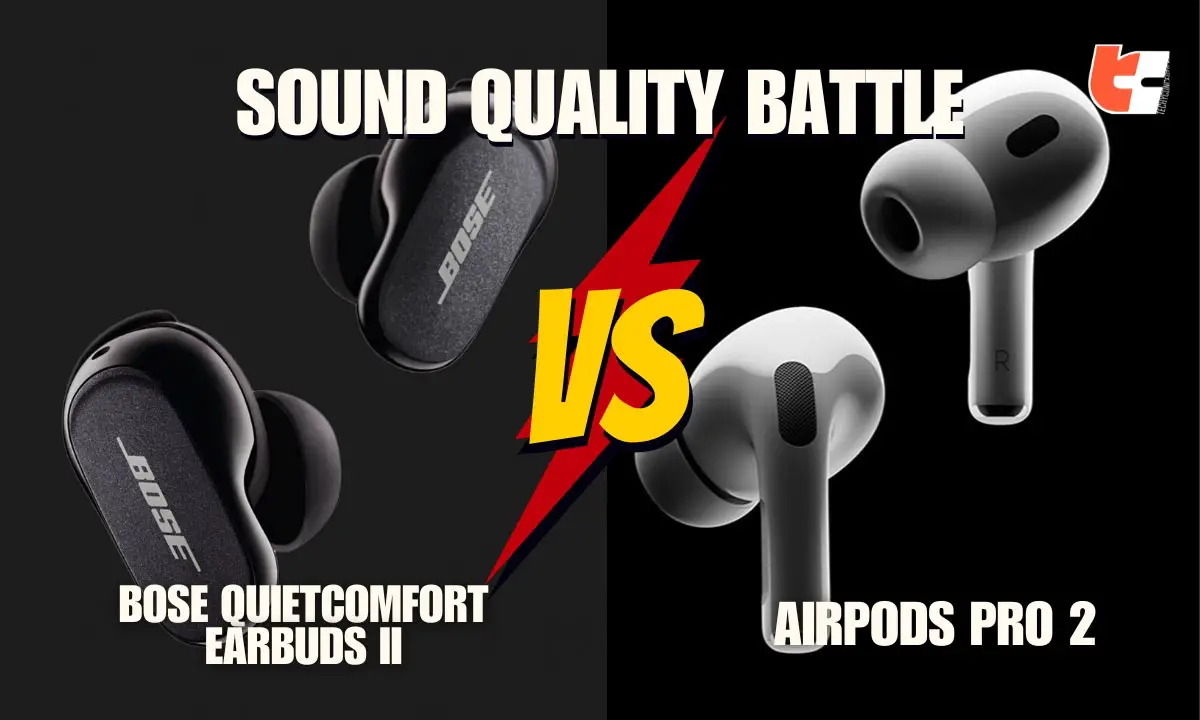When it comes to the best wireless earbuds currently in the market, the competition is fierce. Two such noteworthy rivals have to be the Bose QuietComfort Earbuds II and the AirPods Pro 2.
Both aiming to deliver an immersive audio experience coupled with advanced noise-canceling capabilities, these earbuds cater to discerning users seeking top-tier sound quality and cutting-edge technology.
If you are unable to decide which earbuds you should go for, we’re here to help you make a choice you won’t regret.
In this comparative buying guide, we are going to explore the key features and nuances of both the Bose QuietComfort Earbuds II and the AirPods Pro 2, shedding light on their respective strengths, unique features and limitations.
Which earbuds offer the best value for money overall? Keep reading to find out!
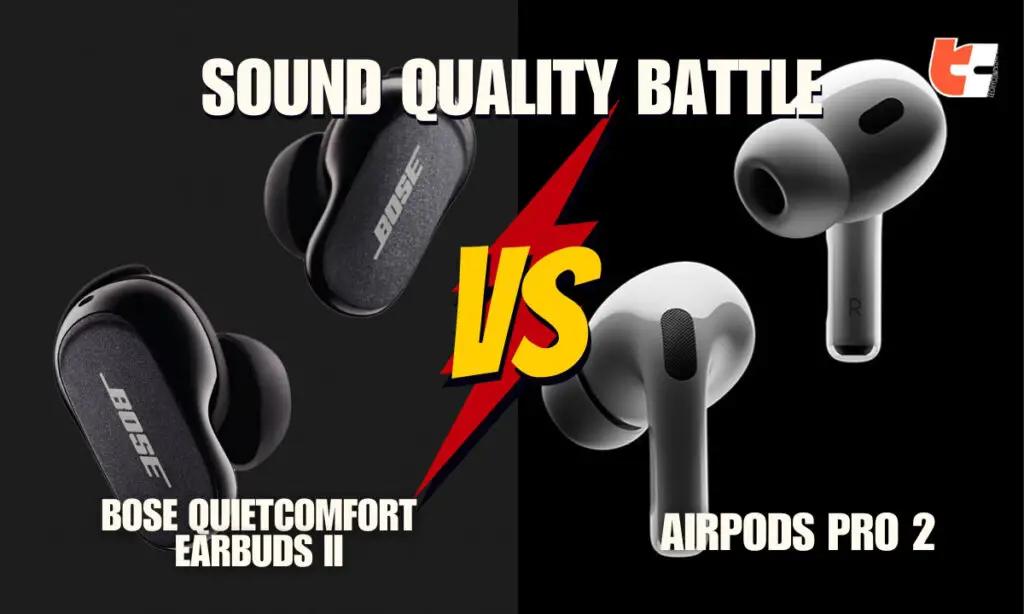
Feature Face-Off: A Detailed Comparison Between Bose QC II & Airpods Pro 2
In this specific section of our article, we will examine two similar and comparable features of both these wireless earbuds and pit them against each other. You, along with us, will determine the ultimate winner in each round. Stay tuned to discover who claims the crown at the end with the highest scores.
Round 1 – Apple’s Adaptive Transparency VS Bose’s ActiveSense Aware
Apple pleasantly surprised us with the innovative Adaptive Transparency feature in the AirPods Pro 2 earbuds, building upon the existing ‘Transparency Mode‘ that effortlessly blends your surroundings and enables conversations without having to remove an earpiece.
In Adaptive mode, the AirPods dynamically reduce the volume of sounds surpassing an 85dB threshold in real-time, offering the unique ability to customize emphasis on voices.
What makes Adaptive truly remarkable is its minimal impact on the natural dynamics of outside noise. This opens up the exciting prospect of using AirPods Pro as active, transparent ear plugs during a loud crowded concert, maintaining a decent volume up to the 85dB limit.
On the other hand, Bose’s ActiveSense Aware feature, although delivers a more robust hearing protection, compromises on the natural sounds of the surrounding environment. When faced with loud sounds, the ANC simply suppresses or squashes them. Testing it with nearby booming music pushes the ANC to such an extreme level that the experience no longer resembles being in Aware mode.
Therefore, considering all, we believe the ActiveSense Aware feature offered by Bose slightly falls short when compared to Apple Airpods‘ Adaptive Transparency feature.
Winner of Round 1 : Apple Airpods Pro 2
Round 2 – Evaluation of Bose Vs Airpods Pro’s Noise Cancellation Performance
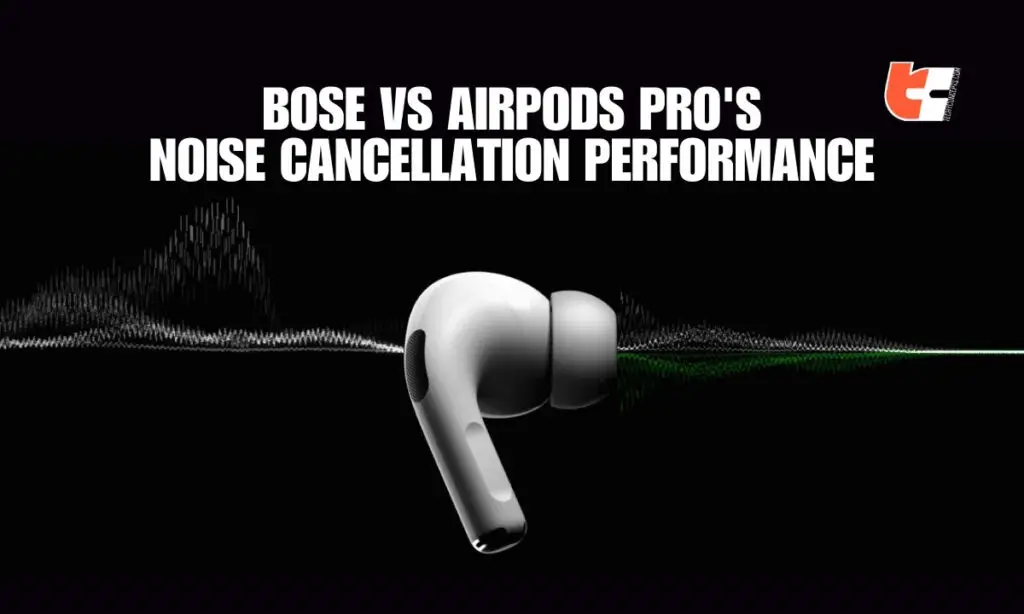
The noise cancellation capabilities of the Bose QC Earbuds II stand out as the most impressive and effective in reducing low-frequency noises, surpassing any earbud models we’ve encountered so far.
They also demonstrate proficiency in attenuating midrange frequencies which is worth praising. This gives them a slight advantage over the AirPods Pro earbuds here.
Furthermore, while we generally appreciate Bose’s consistent approach in configuring an ANC profile, Apple’s more assertive method occasionally proves superior in adapting to dynamic changes in the sound environment.
Now, if we talk about higher frequencies, both exhibit the same average handling of frequencies above approximately 6Hz, so it’s a tie score here.
Moving on, when it comes to low and quiet settings, the AirPods Pro does a fantastic job in maintaining a quiet profile with its ANC activated, devoid of any audible hiss and can easily reduce noise at 48,000 times per second.
In contrast, the QC Earbuds II produce a noticeable hiss. Whether this constitutes an actual masking hiss or merely an amplification of the unresolved high frequencies by its ANC remains a subject of debate.
In a nutshell, Bose consistently delivers a reliable and balanced ANC performance across various scenarios and different sound frequency levels, while Apple claims victory in only some specific situations, securing a very close second position.
Winner of Round 2 : Bose QuietComfort II
Round 3 – Battery Life and Charging Case
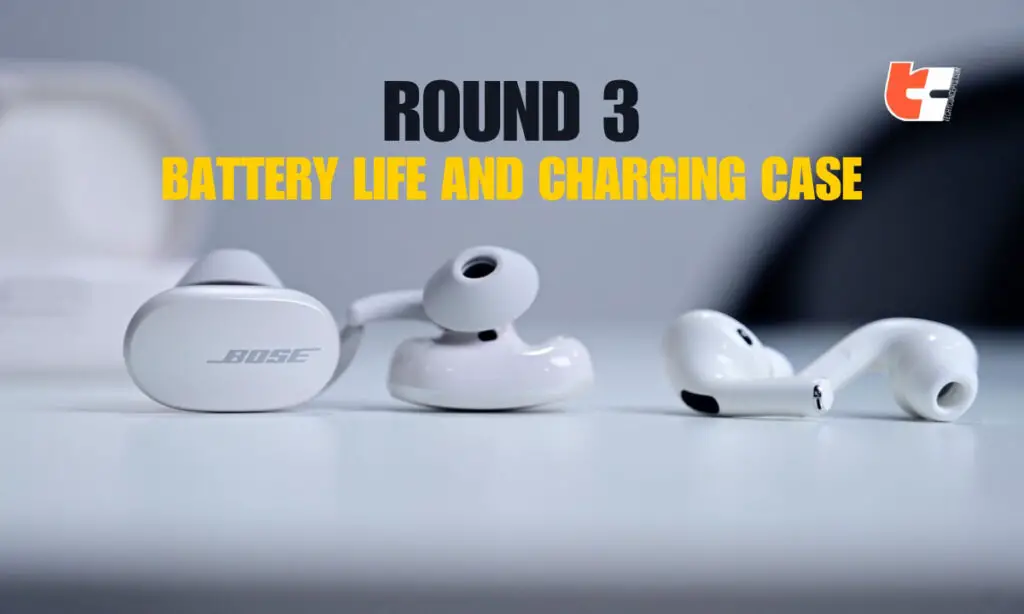
Apple’s charging case introduces several stunning features worth noting. Notably, it now incorporates a lanyard loop (though, Apple doesn’t provide a lanyard with the product), and it boasts a speaker on the bottom panel. This speaker feature enhances the ‘Find My Device‘ function, allowing you to locate your airpods even when snugly stored in the case. The case itself can emit a tone through its speaker for easier tracking.
Additionally, the case holds an IPX4 rating, extending its water-resistant capabilities even to the interior. While this might be a modest water-resistance level, it surpasses the lack of protection offered by most cases. Charging options are also diverse, including a Lightning-to-USB-C cable (included), a MagSafe charger, or any Qi-certified wireless charger.
On the other hand, Bose’s new case marks a considerable reduction in size compared to the original model, yet it remains notably larger than Apple’s counterpart. You can charge it using the provided USB-C-to-USB-A cable, but here’s the deal – wireless charging is not supported.
However, removing the Bose earbuds from their case is notably simpler, thanks to stability bands forming an easy-to-grasp ridge. In contrast, the AirPods Pro and their case maintain a glossy white build made of plastic.
Last but not least, Apple takes the lead in the battery department. Both the AirPods Pro and the QC Earbuds II boast approximately six hours of usage per charge (with ANC on). However, Apple’s case outshines Bose’s, holding an additional 24 hours of charge compared to Bose’s 18 hours.
Winner of Round 3 : Apple Airpods Pro 2
Round 4 – Audio Performance and EQ Options
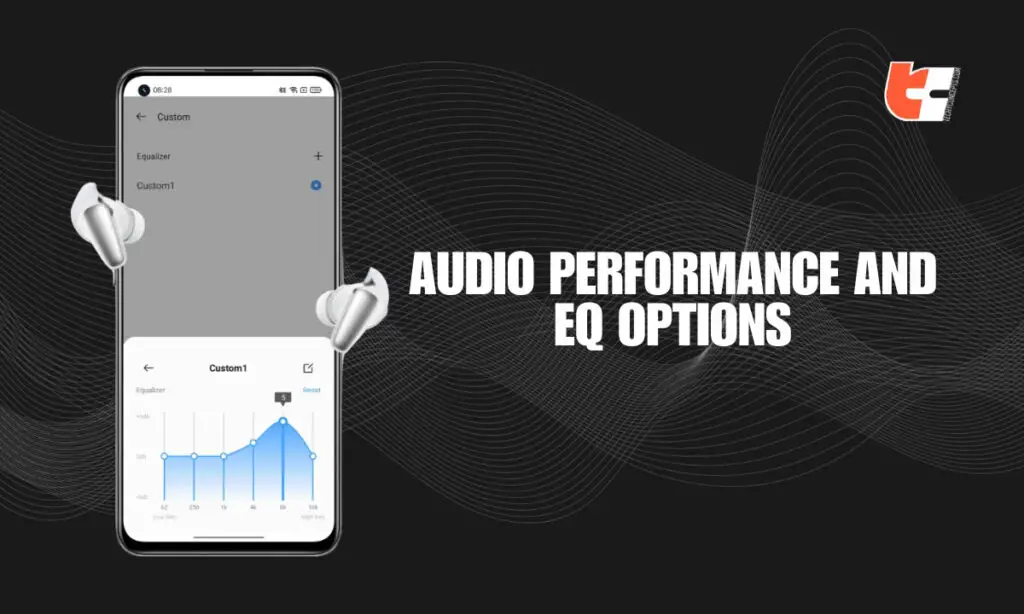
The sound quality is often the main priority for most users, that’s what we’re going to talk about now.
In the sphere of audio quality, Apple Airpods and Bose QC Earbuds both deliver crisp and crystal-clear sound experiences, with Bose clinching the victory due to a subtle difference in bass depth. It’s intriguing that despite Apple’s AirPods Pro boasting larger drivers (11mm compared to Bose’s 9.3mm), usually indicating a more substantial bass, Bose takes the lead in this aspect.
While an increase in bass doesn’t necessarily guarantee a better, superior audio experience, the QC Earbuds II’s bass tones exude a more lifelike quality, especially enhancing the thump of kick drums. Beyond the low-end spectrum, both earbuds provide sculpted yet well-balanced sound with impressive clarity.
Furthermore, Bose’s accompanying app stands out for its adjustable three-band EQ as well.
While the three bands are simply labeled Bass, Mid, and Treble without specified frequency ranges, they offer users the flexibility to fine-tune their audio experience conveniently through the app on their smartphone.
On the other hand, Apple’s EQ section provides a list of presets, lacking adjustable bands and visual curves that would reveal the impact of changes made by the presets on the sound. Hence, the Apple Airpods slightly fall behind Bose QC earbuds when it comes to offering users a variety of EQ and sound adjustment options.
Winner of Round 4 : Bose QC Earbuds II
Round 5 – User-Friendly On-Ear Controls

Which earbuds provide their users a more convenient access to touch controls on the external surface of the buds? Let’s find out.
Given that Apple predominantly utilizes press or press-and-hold gestures on the stems for controls (with the exception of the capacitive touch volume gesture involving a finger slide rather than a tap), the possibility of clumsy users mistakenly turning on features is relatively low.
While we totally appreciate the inclusion of volume controls, achieving consistent accuracy in hitting the sweet spot may pose a challenge for some music lovers. There were instances where placing our fingers correctly presented no issues, yet there were other times when our success was less reliable.
On the contrary, the Bose QC Earbuds II offer capacitive touch controls where volume adjustment involves a swipe up or down, and other functions are managed through a series of taps. In some cases, this type of configuration may lead to unintentional mishaps, as one may accidentally tap the control area when simply trying to adjust the earpieces for a more snugly fit.
In summary, here’s our overall impressions – both control layouts do have their merits, allowing for convenient volume changes and generally easy operation. However, neither layout is flawless or perfect. The AirPods Pro exhibit somewhat finicky volume controls, while the QC Earbuds II carry the potential for accidental taps, resulting in a draw on this round.
Winner of Round 5 : It’s a Tie!
Round 6 – Integration & Apps
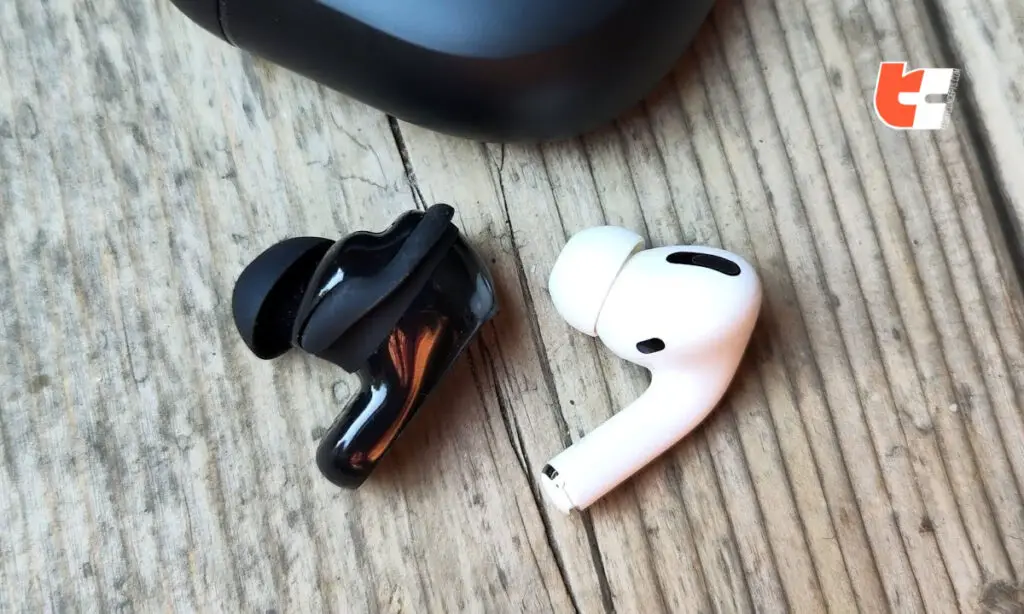
Let’s just cut to the chase, there’s no dedicated app for changing and customizing audio settings for your Apple AirPods. Either you have to connect your earbuds to source devices such as a smartphone, computer, smart watch etc. for making adjustments or download third-party apps such as MaterialPods, Air Battery etc.
On the other hand, you can control volume, stream music, connect multiple devices and do pretty much everything via a number of Bose companion apps such as the “Bose Connect”, “Bose SoundTouch” and “Bose Music” apps that can be downloaded on both Android and iOS devices.
Secondly, although Apple’s AirPods Pro 2 also works well for Android devices and not just limited to iOS users, there are still some limitations. Android users only have access to the very core features like Active Noise Cancelation and volume control. Some of the other convenience features, such as automatic ear detection and Apple’s Find My network, do not work with Android devices and are only available to iOS users.
Due to these differences in user-friendliness and accessibility features, Bose deserves the upper hand in this round!
Winner of Round 6 : Bose QuietComfort II
Round 7 – Microphone Audio Precision
The overall audio quality, as we felt, of the microphones of the QC Earbuds II sounded a little distant compared to the AirPods Pro.
We understand Bose earbuds’ efforts to employ better EQs to highlight consonants and to enhance intelligibility, but in turn this leads to a far less natural and crisp audio quality. This characteristic is better suited for professional headsets, such as those used by pilots or NFL coaches, not average users who prioritize a pure natural sonic experience.
In contrast, Apple’s microphones deliver a relatively natural sound experience by fantastically incorporating a blend of low-mid richness and an equalization that emphasizes consonants. We absolutely appreciate the distortion-free recording and the precise mic clarity. We’re sure you can already guess who won this round.
Winner of Round 7: Apple AirPods Pro 2
Round 8 – Side Accessories & In-Ear Fit
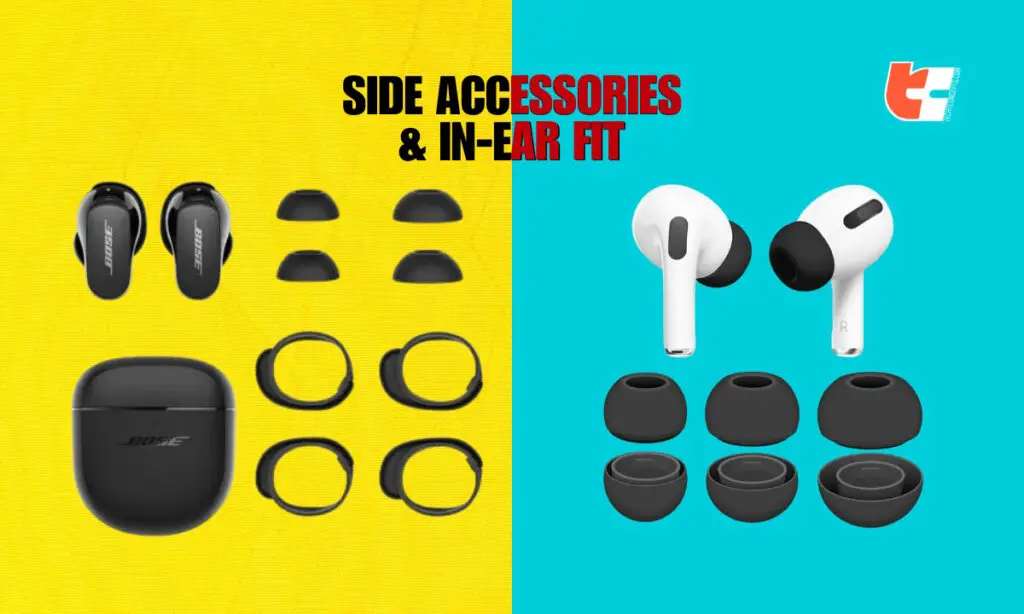
Since we all have different ear canal shapes and ear tips, how comfortable and well one earbud feels and fits will significantly vary from person to person. Nonetheless, we can still judge and compare the accessories users are typically provided by Bose and Apple for added convenience.
Generally, 3 pairs of stability bands (of different colors and sizes) and 3 pairs of oval silicone eartips (in small, medium, and large) are included in the box with the 2nd-Gen Bose QC Earbuds.
On the other hand, the AirPods Pro earbuds are accompanied with 4 pairs of oval ear tips of different sizes (extra small, small, medium, and large). That’s all. No other fit accessories.
Overall, both the earbuds fit in our ears just fine and felt all snugly and comfy during the testing period. But to be honest, the Bose earpieces feel a little more secure due to their larger footprint and stability bands. The in-canal seal feels more intact with the Bose earbuds compared to Apple Airpods.
Winner of Round 8 : Bose QuietComfort II
Our Final Verdict
All in all, determining who’s the real king between Bose QC Earbuds and Apple AirPods Pro ultimately will vary based on different user experiences, individual preferences and priorities. While both offer impressive features, it’s worth noting that the Apple AirPods Pro 2 stand out as the best value for money, given how they are cheaper in price (only $249) compared to the Bose QC earbuds ($299).
Therefore, in a nutshell, for users seeking above-average audio quality without breaking the bank, the AirPods Pro 2 emerges as a clear and cost-effective choice, providing an excellent balance between performance and budget constraints.
However, if comfort is a priority and at the same time you want to enjoy better noise cancellation features with more bass depth and a wide range of sound frequencies, you should really go for the Bose QuietComfort II earbuds.
Frequently Asked Questions
Q.1: What is better, Bose or AirPods Pro?
Answer: The choice between Bose and AirPods Pro depends on your preferences. Bose generally offers superior sound quality and more noise cancellation, while AirPods Pro are known for seamless integration with Apple devices, more natural sound quality and a compact design. Consider your priorities in terms of audio quality, comfort, and ecosystem compatibility.
Q.2: Are AirPods as good as Bose?
Answer: Apple Airpods offer some really awesome innovative features and have their own perks and strengths. However, considering all aspects, we find the Bose headphones to be slightly more balanced, providing more effective noise cancellation across all frequencies. The in-built microphone offers improved recording quality and crisp audio pickup. Additionally, Bose boasts a superior companion app and lower latency on both iOS and Android platforms.
Q.3: Is Bose QC earbuds 2 worth it?
Answer: The worth of Bose QC Earbuds 2 depends on what your priorities and needs are. These earbuds are known for excellent sound quality and effective noise cancellation. Consider if these features align with your preferences and if the price point is justified for your audio needs.
Q.4: What are the disadvantages of Bose earbuds?
Answer: Bose earbuds, like any product, have some drawbacks. Some users may find them relatively expensive compared to other options. Additionally, the design might not suit everyone in terms of comfort and in-ear fit, and there could be occasional connectivity issues reported by users.

